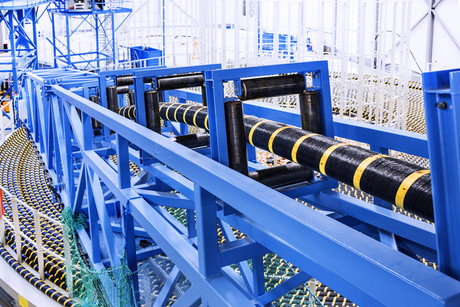ABB wins $90m order to supply 'power from shore' cable spanning 200 km

A new cable system spanning 200 km, designed to deliver 100 MW of electricity — the equivalent of powering more than 14,000 homes — will supply power from the Norwegian power grid to a Swiss offshore oil field.
ABB has won an order worth around $90 million from energy company Statoil for the high-voltage cable system.
Located 155 km west of Stavanger in the North Sea, Johan Sverdrup is considered one of the largest offshore oil fields on the Norwegian Continental Shelf (NCS). Once fully operational, 550–650,000 barrels of oil are estimated to be produced per day, accounting for nearly 40% of total oil production from the NCS.
ABB said it will design, manufacture and install an 80 kV extruded direct current (DC) cable system to transmit power from the Norwegian power grid to the offshore production facility. At around 200 km in length, the company claims it will be the longest extruded submarine cable system to an offshore oil and gas platform facility in the world.
“Delivering enhanced customer value through close customer collaboration is an important element of ABB’s Next Level strategy, and we are delighted to be supporting Statoil with this cable system as well as the HVDC converter stations,” said Claudio Facchin, president of ABB’s Power Systems division.
“With this ‘power from shore’ cable solution, ABB will once again be pushing the boundaries of technology and lowering environmental impact, in line with our vision of power and productivity for a better world.”
Supplying electric power from shore for offshore oil and gas production avoids the need to burn diesel or gas out at sea to power the equipment and machinery on the platforms, resulting in substantial reductions in CO2 and nitrogen oxide emissions.
In March, ABB was awarded an order to supply the two high-voltage direct current (HVDC) converter stations for the same project. One will be located on shore at Haugsneset, where it will turn alternating current (AC) from the grid into DC. This will be transmitted efficiently over 200 km to the second station, which is on one of the oil platforms. There, the company says the DC current will be converted back into AC and distributed to the rest of the field.
Western Power to expand use of drones this summer
Western Power's network is among the largest in Australia, with several rural distribution...
WA Govt backs up Goldfields power supply
The Cook government has secured a temporary back-up power supply for the state's Goldfields...
Acting locally to maximise the grid
With a few straightforward changes, Australia's electricity grid can be made far more...





